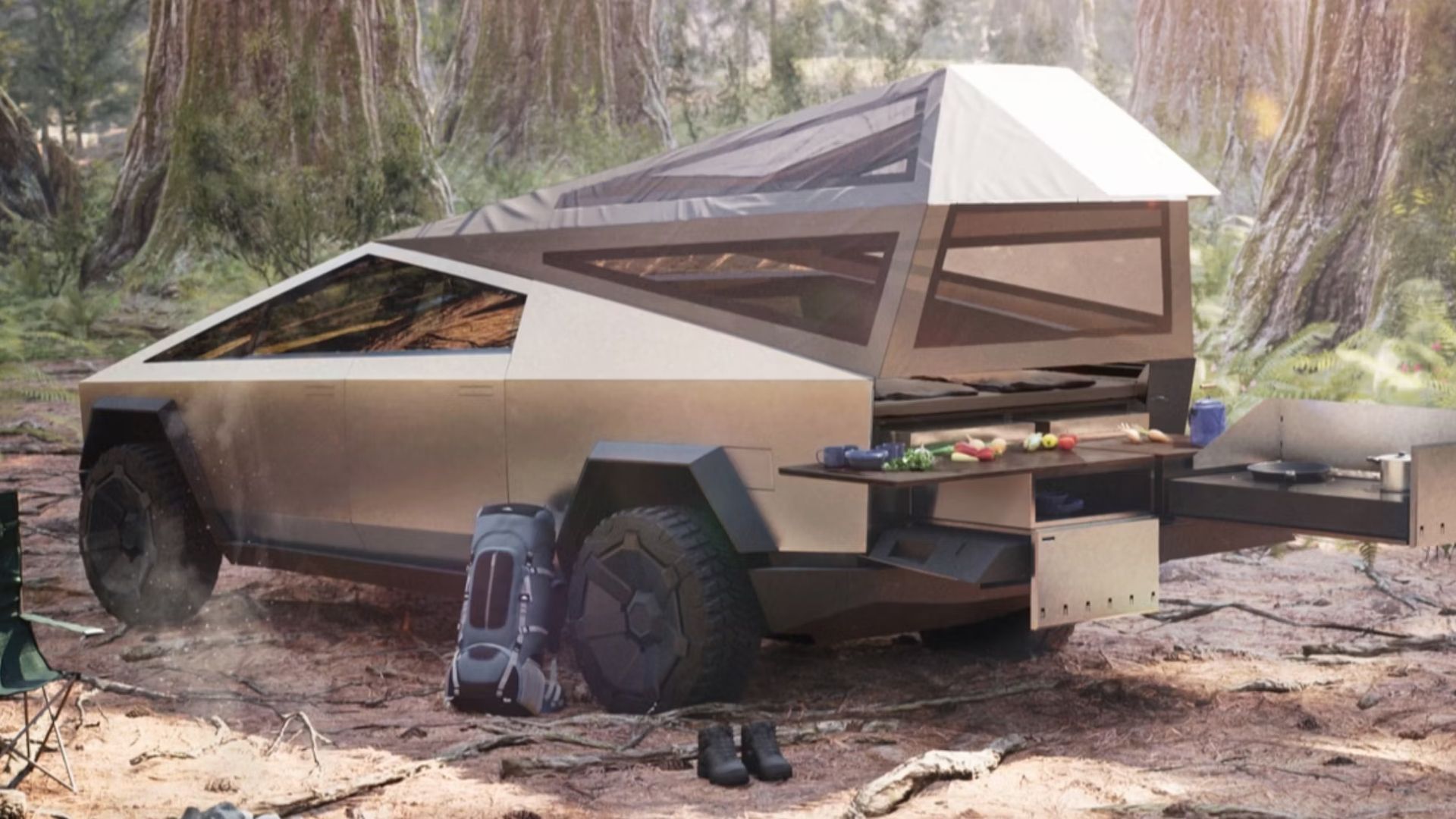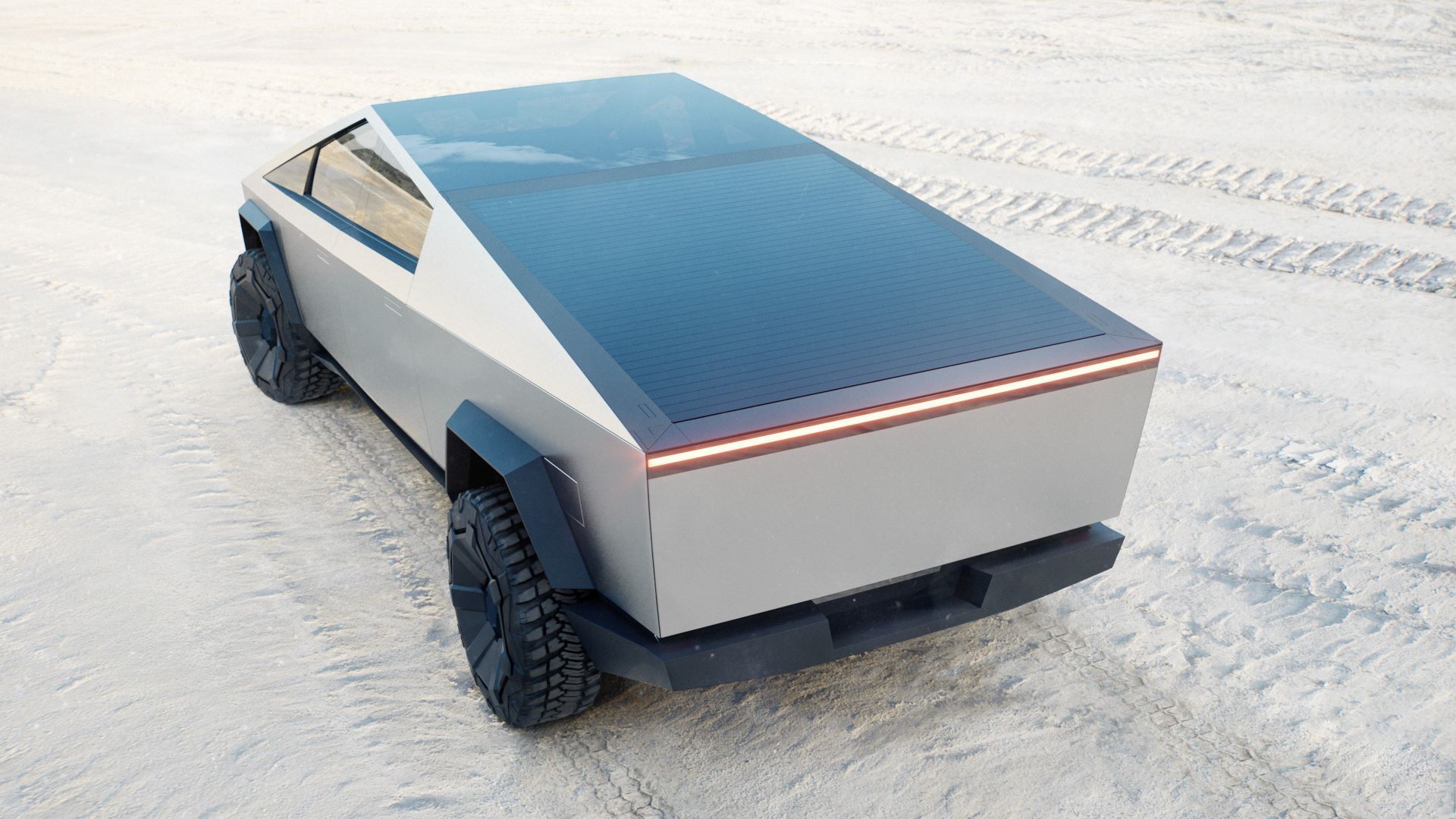Summary
- The Tesla Cybertruck has a polarizing appearance that is either loved or hated. Its polygonal design and grayscale interior make it stand out from traditional vehicles.
- The Cybertruck’s interior is minimalistic, with straight lines and a central instrumentation screen. The steering wheel is a horizontally-stretched hexagon, reminiscent of previous Tesla designs.
- The Cybertruck represents the luxury truck reimagined, stripping away the brawny fantasy and focusing on a plush, sedan-sized cabin with raised suspension and a truck bed. Its unconventional design challenges the norms of traditional trucks.
After a long and twisted history of promising starts, delayed deadlines, hasty revisions, and passionate opinions, the Tesla Cybertruck is for sale! That’s right, anyone can actually go to Tesla’s website and order a Cybertruck of their own. The Cybertruck is perhaps the most polarizing production vehicle since the PT Cruiser.
In an impressive PR coup, Tesla has managed to maintain a steady supply of writers ready to spray out their most fiery ‘hot takes’ free of charge. Love it or hate it (and some people have made hating the Cybertruck a fundamental part of their identity), the Cybertruck is one of the most spectacular production vehicles in automotive history.
After multiple years of concept photos and teaser shots, many people remain stunned that the Cybertruck actually exists, asking “How did this happen?” That question really has two parts. First, why does it look like that? Second, how did the all-American pickup truck turn into a luxury showboat?
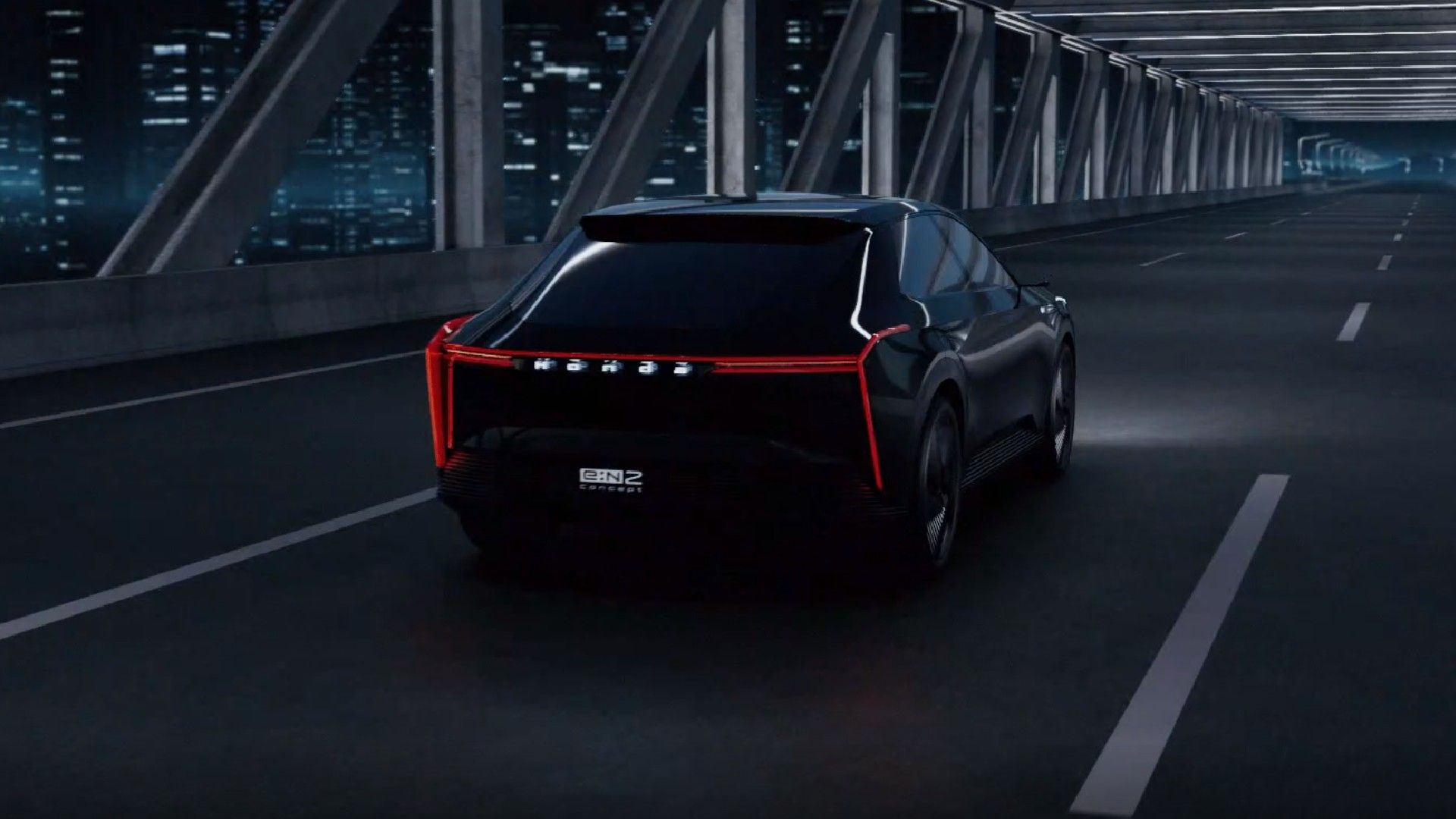
Honda’s Next-Gen EVs Look To Be Inspired By The Tesla Cybertruck
Despite being late to the EV revolution, Honda plans on entering in full force with a new set of futuristic, Cybertruck-looking vehicles.
In order to give you the most up-to-date and accurate information possible, the data used to compile this article was sourced from Tesla and other authoritative sources, including MotorTrend, Hagerty, and Edmunds.
The Cybertruck’s Unforgettable Appearance
The Cybertruck’s exceptional looks hardly need a detailed description, and it’s likely you either love it or hate it. By now, anyone who has scrolled through their social media feed for more than 25 seconds is familiar with Tesla’s polygonal truck. It almost looks like a primitive CGI rendering of a vehicle instead of something that actually exists in the real world.
Tesla Cybertruck’s straight lines make the Lincoln Continental Mark V look comparatively curvaceous. Its round tires look out of place under their half-octagonal fenders. One gets the impression that the Cybertruck would ride on hexagonal wheels were it not for the pesky problem of physics.
Cybertruck Exterior Design Characteristics
- Angular geometry.
- Exoskeleton construction.
- Impact-resistant windows.
- The bed has an angular design, a clear distinction from other mainstream pickups.
- LED lighting with a minimalist approach.
Its headlights and taillights are crisp LED stripes that span the front and rear ends, almost making the truck look as if it is lit by neon. In a very nice practical touch, both sides of the truck bed have a solid line of lighting from front to back. This is a lot more useful than the customary single lamp aimed downward from above the cab’s rear window.
Inside and out, the Cybertruck is devoid of color. From the unpainted stainless steel body panels to the charcoal-black seats, the entire vehicle exists in grayscale. The only color in the interior comes from the instrumentation screen. Not even a muted beige is deployed.
The Polygonal And Neutral-Colored Interior
- The cabin also takes on a minimalist approach.
- A large central touchscreen display serves as the dashboard and control center for the Cybertruck features.
- Sitting accommodation for up to six people.
Like the exterior, the interior of the Cybertruck is designed with as many straight lines as possible. Even the seats are topped with trapezoidal headrests. The dashboard has a sharp-cornered ridge from door to door that looks like it would mercilessly dig into the back of a passenger’s legs if they propped their feet on it and leaned back on the seat for a nap. In keeping with the prevailing trend among upscale vehicles, the roof is made of tinted glass instead of sheet metal.
The Instrumentation Is Minimalistic
Like the Mini Cooper before it, the Cybertruck’s instrumentation is in the center of the car rather than in front of the driver. In keeping with Tesla’s minimalist style, the entire front of the vehicle only has a single screen interrupting the blank surfaces. Even the air vents are discreetly tucked under the dashboard. The steering wheel is a horizontally-stretched hexagon instead of a round wheel. Many will recall that Tesla previously tried to reinvent the steering wheel by cutting away the top of it.
Amusingly, the driver’s-side airbag juts out from the center of the steering wheel in the same manner as early 1990s cars from right after the federal airbag mandate caused hasty steering column revisions. Apparently, over the course of ‘reinventing the wheel’ and ‘redefining the truck’, no one at Tesla noticed that the designers of old-fashioned round wheels have long figured out how to integrate the airbag into it.

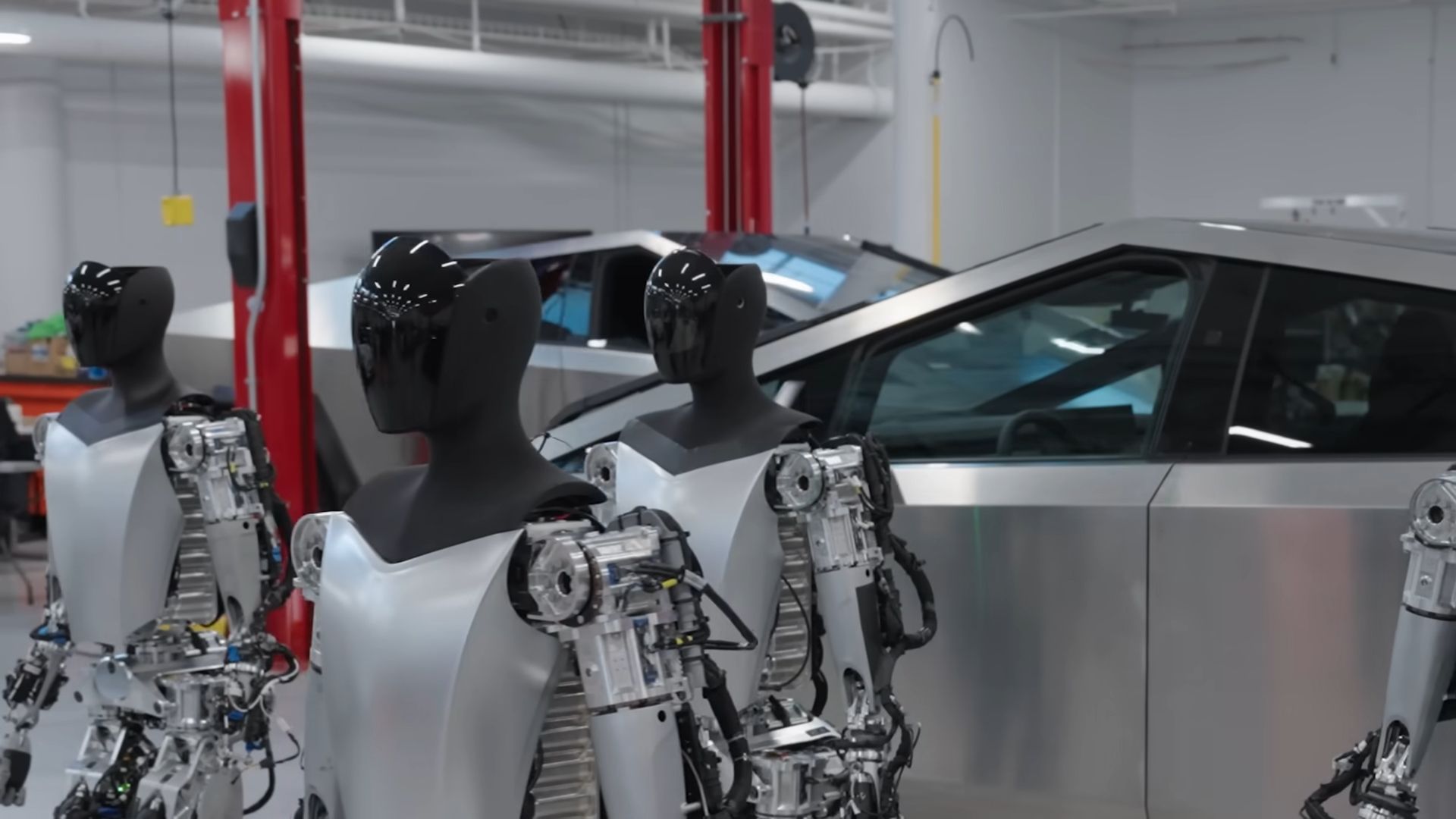
The Tesla Cybertruck Isn’t Going To Yoketown!
The Cybertruck has been spotted with a round steering wheel – what does this mean for the Yoke?!
The Cybertruck’s Unexpected Italian-British Origin
Elon Musk cites the Lotus Esprit S1 that James Bond drove in The Spy Who Loved Me as the primary inspiration for the truck. One of the first straight-sided sports wedges, the first-generation Esprit, was primarily designed by supercar legend Giorgetto Giugiaro, who produced a design very similar to his earlier work on the 1971 Maserati Boomerang concept car.
The Maserati Boomerang
By the early 1970s, the curvaceous, often bubbly auto esthetics of the 1960s were giving way to the heavy, straight-sided look that would define the muscle cars, nimble speedsters, and broughams of the upcoming decade. The Boomerang took this emerging trend to its logical extreme, eliminating every bent line possible in the car’s design.
But while Maserati paid to have this car designed and then produced a single street-legal example in 1972, the venerated Italian automaker apparently lacked the nerve to put it into production (or even make a second one). Instead, the British car manufacturer Lotus hired the Boomerang’s designer, who more or less turned it into a production vehicle. The Maserati Boomerang became the Lotus Esprit. It’s actually quite amusing that an Italian concept car would be produced by a British company.
The Lotus Esprit
In 1976, the first Esprits rolled off of Lotus’ production line. The following year, the world saw one of them in the James Bond film The Spy Who Loved Me. James Bond drove his Esprit underwater because it was also a submarine. The submarine in question was featured at an exhibition in the Peterson Museum, celebrating 60 years of the Bond franchise. At some point, Elon Musk saw The Spy Who Loved Me, and James Bond’s underwater wonder wedge lodged itself in his brain.
When Elon Musk bought his way into Tesla management, the underwater Esprit apparently still swam in his mind. One might think he would try to resurrect it in sports car form, but instead he had the Esprit reworked into a truck. Indeed, in profile, the British sports coupe and the Cybertruck look astonishingly alike.
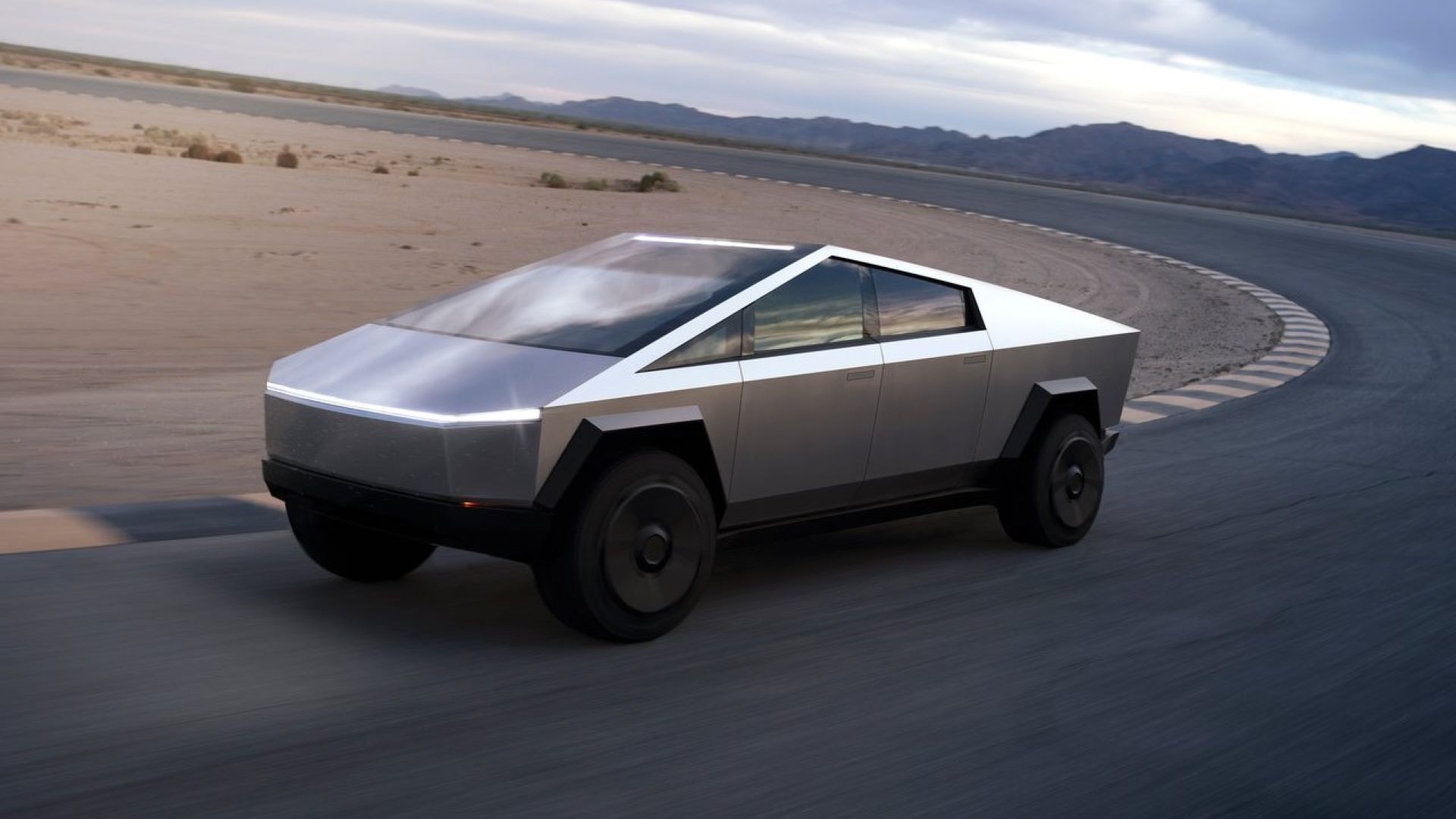
Why The Tesla Cybertruck Is Better Than The Ford F-150 Lightning
The F-150 Lightning is the truck everyone wants, but the Cybertruck is what people just might need.
The Cybertruck Is The Ultimate Luxury Truck (In Ways That Few People Want To Admit)
The Cybertruck, while nominally and allegedly capable of doing truck duties, is the luxury truck distilled to its purest essence: a large, plush, sedan-sized cabin with raised suspension underneath and a truck bed attached to the back. Of course, it has far more horsepower, torque, payload capacity, and towing capability than anyone will use when commuting or running errands. To properly understand the Cybertruck, one must understand the entire concept of luxury trucks.
The SUV’s Shift To Family Transportation Led To The Luxury Truck
Before getting to the concept of a luxury truck, one must discuss the rise of the family SUV. It’s tough to pinpoint when the SUV stopped being an enclosed truck and took over the minivan’s family-hauling duties. Until at least the 1990s, SUVs tended to be too compact for large families. As a comparison, a 1995 Ford Explorer was narrower and only barely longer than a Plymouth Voyager of the same year. Indeed, the Explorer wouldn’t have a third row of seats until 2000 – and even then it was just an option.
But while 1990s SUVs were still relatively small, parents were already packing their children and Little League supplies into them. An early sign of the SUV’s family-friendly future was the 1995 romantic comedy Something To Talk About, which featured several prominent shots of lead actress Julia Roberts driving an extremely polished and well-waxed 1993 Jeep Grand Cherokee without ever saying “It’s a Jeep thing. You wouldn’t understand.”
The Cadillac Escalade is a landmark in the rise of purely city-bound SUVs. It dropped all pretensions of hauling lumber or swatting mosquitoes in the untamed forest. Over the ensuing years, SUVs in the lower-priced market tiers would gradually lose their wilderness aspirations. Today, even the Chevrolet Blazer’s promotional photographs set it against backdrops like upper-class shopping districts, cityscapes at twilight (sometimes with Christmas lights twinkling in the background), and charming suburbs.
By 2016, it was obvious that parents preferred SUVs to minivans. In that year, Chrysler discontinued the Town and Country (the minivan that essentially launched the market). However, this transition has given the SUV the unshakable odor of children and Cheerios. Those wanting to pretend that their lives amount to more than the grocery store, the work commute, and the school drop-off line had to look elsewhere for a vehicle that would supply that fantasy: the luxury truck.
The Rise Of Luxury Trucks
Unlike an SUV, a truck is theoretically unsuited for transporting one’s progeny. Its cargo space is open to the wind and storms. Truck cabs tend to be small and cramped (or at least, they used to). But as children conquered SUVs, the truck’s sparse utilitarianism allowed many purchasers to pretend that they had a lot more burliness in their lives than anyone loading the kids and snacks into a Range Rover.
While truck interiors had gradually been getting more spacious for years, Ford was one of the first major companies to have an attempt at a luxury truck in 2002 with the Lincoln Blackwood. This upscale truck’s upholstered bed and plush interior made it a near-impossible sell. No one could pretend they would ever throw a freshly-shot dead deer in the back without immediately renting a carpet steamer.
Successive attempts at luxury trucks sputtered similarly until automakers stopped putting them in their upscale brands and instead categorized them as up-trimmed versions of their construction-site mainstays. Instead of adding trucks to its Lincoln lineup, Ford created the F-150 Limited in the early 2010s. As of 2023, it has a starting MSRP of $83,010.
As time went on, many other major automakers have put out their own luxury trucks, covering the formerly-utilitarian pickup with leather (or Alcantara), heated seats, stereos that are expensive enough to call ‘sound systems’, custom-color ambient lighting, and other features lifted right out of high-status coupes.
The Cybertruck Returns The Luxury Truck To Its Roots
The Cybertruck brings the luxury truck back to its misfired Blackwood beginnings. After other automakers transformed the truck into a well-upholstered luxury cocoon with a bed on the back, the Cybertruck strips the luxury truck of its brawny fantasy. Unlike top-trim F-150s and Rams, the Cybertruck aggressively reminds drivers that their lives do not require a towing package. Few people can convincingly pretend that they will take the Cybertruck off-roading through sands and swamps, nor will they ever go hunting and throw dead animals into the illuminated truck bed.
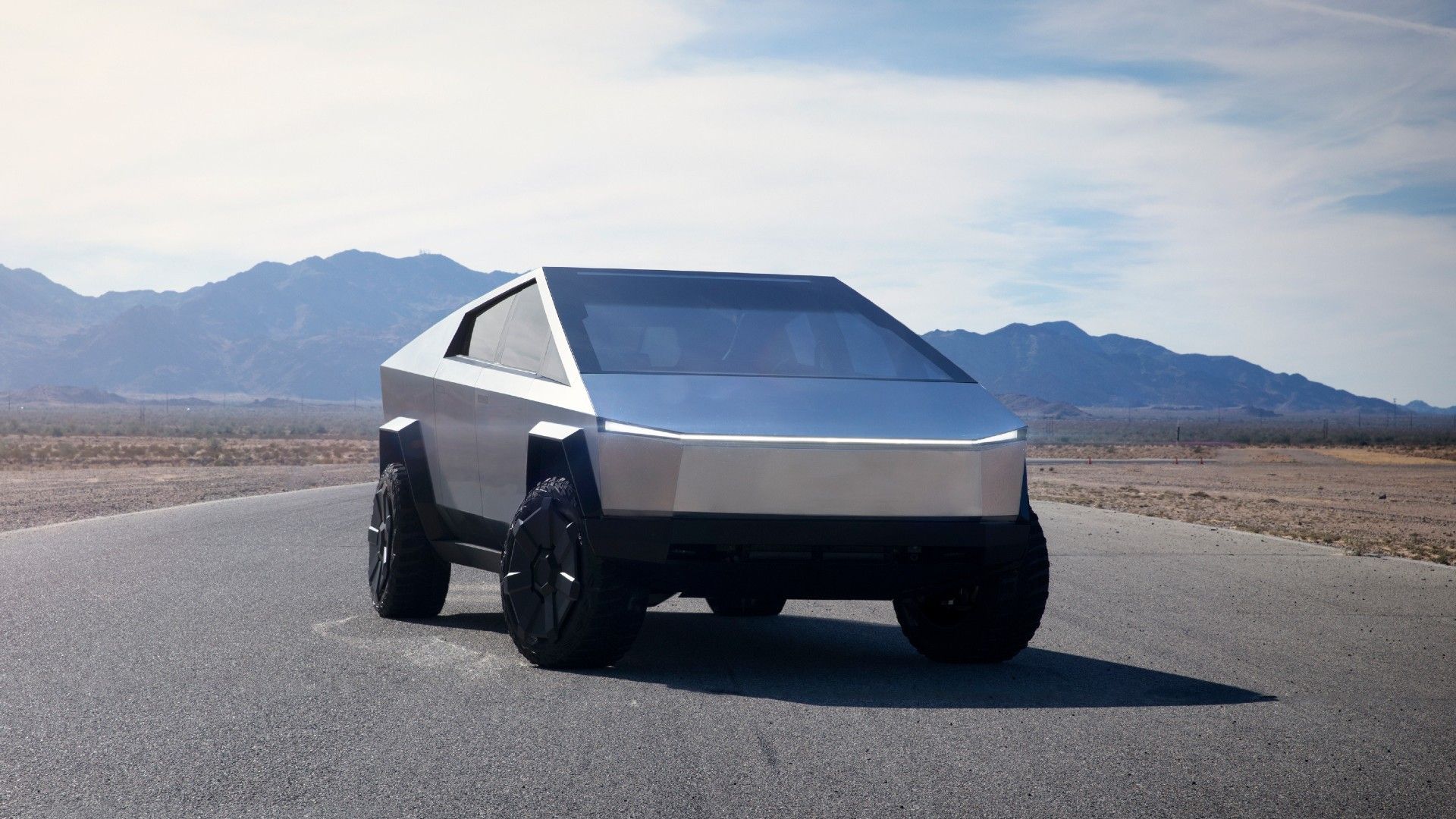
Tesla Takes U-Turn On The Cybertruck’s Anti-Flipping Clause
Tesla just backtracked on its Cybertruck “anti-flipping” clause soon after it said you can’t sell your Cybertuck within a year. Here’s what we know.
The Cybertruck Is A Product Of Its Time
One might think the car community would be a lot happier than it is with the Cybertruck. After all, it is a common lament that “all cars these days look the same”. But when offered the chance to purchase a vehicle that actually looks different, the purest of purists hastily closed their wallets in revulsion. It doesn’t help that Tesla CEO and unofficial mascot Elon Musk has become a PR liability as he is now also entangled with X (formerly called Twitter).
In the future, the Cybertruck may be seen as a vehicle that was ahead of its time. It’s been several years since conventional SUVs morphed from enclosed trucks to extra-wide minivans. Across the entire domestic vehicle market, aesthetic trends combined with increasingly rigorous wind-tunnel testing have rounded off the profiles of everything from manual-transmission coupes to sensible hatchbacks.
But in recent years, the success of the reintroduced Jeep Wagoneer and the Mercedes-Benz G-Class suggest that the public is gradually growing tired of round cars. Boxy vehicles may be coming back. Will anyone besides Tesla dare to cover them in stainless steel? Time will tell.
Credit: Source link
